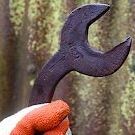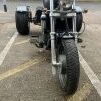Tales from the Sherpa Shed
-
Similar Content
-
Tales from The Flight Deck - hello Espace! 1 2 3 4
By cpjitservices,
- 94 replies
- 7,125 views
-
Trike Tales
By cpjitservices,
- 23 replies
- 1,571 views
-
- 616 replies
- 76,567 views
-
A tale of 2 Partners
By chancer,
- 0 replies
- 460 views
-
- 9 replies
- 1,347 views
-






Recommended Posts
Create an account or sign in to comment
You need to be a member in order to leave a comment
Create an account
Sign up for a new account in our community. It's easy!
Register a new accountSign in
Already have an account? Sign in here.
Sign In Now